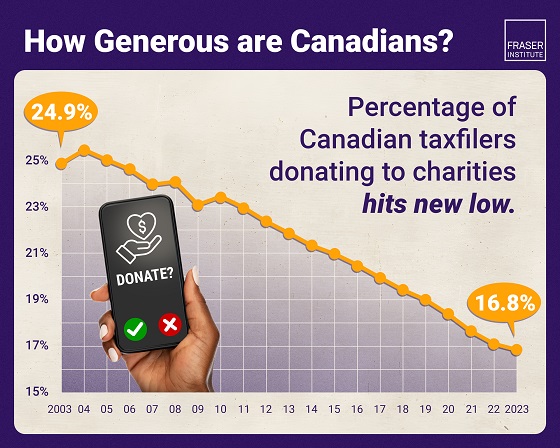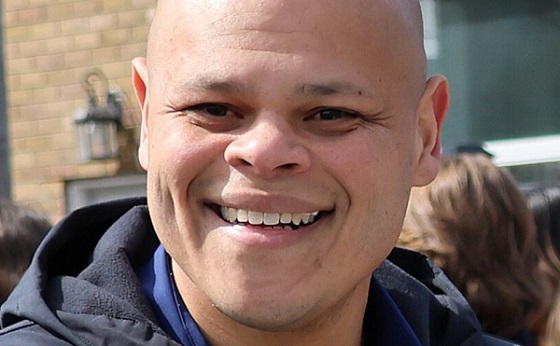illegal immigration
Potential game changer: Will Panama’s new President really ‘close’ the Darien Gap?

From the American Mind: A publication of the Claremont Institute
By Todd Bensman
Panama Pinch Point: Closing the Darien Gap would be a big step toward stopping the flow of migrants north.
Panama’s new president, Jose Raul Mulino, recently began his five-year term with a keynote promise that may help decide the upcoming U.S. presidential election.
Mulino has vowed to “close” the infamous “Darien Gap” immigrant passageway over the border from Colombia to Panama, the jungled 70-mile bottleneck of wilderness foot trails through which nearly 1.5 million immigrants from 150 nations have passed to the besieged U.S. Southwest Border.
“The border of the United States, instead of being in Texas, moved to Panama,” said Mulino, who served as security minister under former president Ricardo Martinelli. “We’re going to repatriate all those people.”
Elsewhere since, Mulino doubled down on his promise to “end the odyssey of the Darien.”
“Those from here,” he said in a May 9 speech, referring to his country. “And those who would like to come know that whoever arrives here will return to their country of origin. Our Darien is not a transit route. No sir. That is our border.”
That warning shot alone, by a sitting executive of Panama, has reverberated throughout the Western Hemisphere but has drawn little public analysis. For starters, the vow signaled a sharply lower trajectory to the historic U.S. mass migration border crisis, which I predicted in December 2020 would emanate from the Gap and did so in numbers that rocketed skyward after Biden’s 2021 inauguration.
Whereas fewer than 20,000 each year went through the Darien for decades, Biden’s border policies, featuring high-percentage acceptance of illegal entries and quick releases into the American interior, beckoned more than 130,000 immigrants from a great diversity of nations to cross the gap that first year of 2021. The number shot to 250,000 by the end of 2022, then 520,000 during 2023 and is on pace to a projected 800,000 before 2024 is out.

Inadvertently or not, Mulino’s closure of the Darien Gap more than three years into this torrent can only help President Joe Biden’s reelection prospects, a border crisis that polls regularly show tops the most important problem list for the U.S. presidential election.
The big question that begs analysis is whether President Mulino can or will follow through on the aspiration and relieve Panama as perhaps the world’s most trammeled immigration transit nation, ease the crushing fiscal burdens pushing destination U.S. cities toward bankruptcy, and save Biden from voter punishment for it all in November.
The short answer is that Mulino seems determined to give this a real yeoman’s effort. For instance, he has already begun groundwork, like appointing as Security Minister Frank Abrego, founder of Panama’s Border Police (SENAFRONT) who is known as a close-the-gap hawk with deep experience battling Colombian rebels in Darien and who is already preparing trail “checkpoints.” His main given mission, according to local media accounts is to close the gap.
But any early optimism by Biden’s campaign managers or long-suffering American cities must be tempered by the fact that powerful forces are arrayed to prevent Mulino’s success. Those would include liberal progressive open borders elements in Biden’s government who want mass migration; United Nations and non-governmental migrant advocacy agencies set up in Panama’s “City of Knowledge” that also want the unprecedented revenue that has bloated them; and a Colombian government that would be stuck with backlogged immigrant populations.
The prognosis for Mulino’s success, in my opinion and of others familiar with Panamanian immigration politics, is not good despite his best intentions.
Minding the Gap
What Mulino has proposed is a dramatic 180-degree policy swivel for the isthmian nation that portends a seismic earthquake to be felt around the world. Knowing how human traffic funnels into this narrow, blockade-able channel is essential to understanding what he has in mind and what would happen afterward.
To reach the gap, immigrants in South America move toward Caribbean beach towns like Necocli and Turbo in the far northwestern corner of Colombia, on the east side of the Gulf of Uraba.
With Colombia’s full acquiescence along that shoreline, the immigrants pile into passenger ferries and other boats that cross them west across the gulf and land them on beaches closer to Panama, whence trailheads start inland. From these trailheads, migrants typically have to cross some 60 or more roadless miles of wilderness mountains and rivers to reach the Panamanian border, which once took up to a week or longer. More recently, a shorter river route was opened.
Once on the Panama side, prevailing policy had immigrants and SENAFRONT border police looking to unite with one another for one of the most unusual policies in the world: a government human smuggling policy called “controlled flow.”
As I first reported in late 2018 from Darien Province, the outrageous controlled flow policy, presumably about to be cancelled, aimed to make sure migrants did not have a chance to linger in Panama. Once SENAFRONT has custody of the gap-exiting immigrants, the agency transports or directs them to various expanding hospitality camps near a main highway where they are fed, sheltered, treated if sick, and given access to money-wiring services and communications.
Then, SENAFRONT organizes commercial bus caravans to drive them all on to Costa Rica, whose own government checks them in and transports them north for delivery to criminal smuggling groups in towns along Nicaragua’s border for the leg to Honduras, as I reported in a three-part 2022 series from that region.
While Panama and Costa Rica may have to shoulder increasing costs of running camps and buses, at least they weren’t the ones getting stuck with the hot potato of needy immigrant populations. They move that hot potato from Colombia to the United States, which never objected to these government passing it on, not even Republican Donald Trump.
But while the Trump administration seemed ignorant of controlled flow, the Biden administration’s liberal progressive wing, its titular head being DHS Secretary Alejandro Mayorkas, strongly embraced it and went to great lengths to expand it. This policy was instituted by the hard left wing of the Biden administration and the non-governmental migrant advocacy organizations that engineered the mass migration logistics, as I document in my book Overrun.
In 2022, the Biden government got Panama to vastly expand the capacity and speed of the controlled flow on the grounds that this would save the lives of immigrants who’d answered Biden’s opened borders invitation. The Biden administration’s progressives, for instance, convinced Panama to open Caribbean Sea access to a navigable Panamanian river that dramatically shortened the difficult foot journeys. The years 2022 and 2023 and 2024 were historic as more than a million foreign nationals came to traverse the shorter, faster, safer route that Biden’s progressives engineered.
At administration urging and with U.S. taxpayer money, the two countries built new hospitality camps and expanded existing ones, improved trail conditions, mounted bridge projects over dangerous rivers, and brought in dozens of UN and non-governmental organizations to manage migration aid and support from Panama’s so-called “City of Knowledge.”
The U.S. State Department and the U.S. Agency for International Development (USAID) began showering many hundreds of millions of dollars in U.S. taxpayer funds on advocacy groups that set up shop in Panama and exerted political influence in a country known for its susceptibility to government corruption, a place the the CIA’s World Factbook calls a historic money-laundering and illegal drug trafficking hub.
It was against all this momentum that Panama’s new president suddenly announced he was going to shut the whole thing down.
Disruption of an Established Order
In my 2021 book America’s Covert Border War, I discussed the Darien Gap as a U.S. national security threat because it has enabled terrorist travel to the American border. I proposed a set of policies that would be bought and paid for by a mythological U.S. administration that really would one day want – or need – to seal the Gap after, say, a terror attack. An American administration could impose robust ICE Air deportation flight operations on the supposedly allied nations of Colombia, Panama, Costa Rica, and Mexico. U.S. taxpayers would foot the bill because those countries should not be asked to pick up the tab for U.S. national security.
The Biden administration cannot be counted on to go that far for reasons that will be explained shortly. But I and other experts who have witnessed the flow in these countries believe the volume of migrants can still be reduced.
“Physically, he can shut the border. He can do it if he’s got the guts. He can do it tomorrow,” says independent blogger and war correspondent Michael Yon in reference to Mulino. Yom, who has spent the past two years living and reporting on all sides of the Darien Gap, knows its surrounding geography or politics better than almost anyone. He says Mulino can shut down most human traffic through the gap and deter any further movement using the very same measures Panama used when Covid hit and it closed its borders to Colombia.
At any given time, about 5,000 are moving through the gap. Let them pass through as the last ones under the “controlled flow” regime, Yon suggests.
Then, Mulino can start the program by having SENAFRONT intercept Colombia boat traffic moving almost all the immigrants across the Gulf of Uraba.
“Seize any boats and people will get the hint really quick,” Yon said. “Once people start losing those expensive boats, that’ll do it. They’ll be on the phone reporting back, ‘Hey I’ve been arrested in Panama, and they took my boat.’ That’ll do it right there. Right away.”
Those who get through and onto the trails will need to find a similarly rude awakening in SENAFRONT officers not interested in rescue so much as detention and expulsion, in Yon’s expert view. They’ll all go into hospitality camps converted into real detention camps, only to be kicked back as soon as practicable to Colombia.
“Make it all Colombia’s problem, and you’ll see Colombia stop them,” Yon said, referring again to the dynamics seen during Covid. “If it worked for Covid, and we know that they did it then, it’ll work now too.”
Yon’s point is supported by data. A 2020 United Nations report credited a Panamanian coronavirus quarantine with significantly deterring migration by containing those SENAFRONT caught in camps indefinitely. Numbers of border crossers dropped from 24,000 in 2019 when controlled flow was in use, to only 4,000 in 2020 when Panama opened detention camps.
Migrants stopped trying the Gap in large numbers when word of indefinite Panamanian detention got back to Colombia, which then had to close its own borders lest it too get stuck with huge numbers of immigrants, the hot potato.
Next up, according to Yon: revoke all visas and immediately expel every United Nations agency and all the non-governmental organizations whose work and aid incentivize the traffic. These agencies, fat with U.S. tax money, will try to use political influence in the Panamanian congress or in Mulino’s own administration to undermine the new policies.
“Put police on their doors, and tell them it’s time to pack up and leave right now,” Yon said.
But while Panama’s narrow geography would allow a determined president to almost certainly replicate Covid-era border closure and detention with expulsion policies, Yon said he’ll need “guts” to stay the course when political pushback immediately begins that Mulino might not be able to withstand.
He’ll get it from the government of Colombia. From the United Nations and NGOs profiting by the flow. From elements of U.S. government that believe in open borders.
The key weapon they will deploy is a global disinformation media campaign that will paint Panama’s president as inhumane to marshal global sanctions and other economic repercussions.
“They’ll hit him hardcore in the press. They’ll show kids dying in the jungle,” Yon said. “It takes damn the torpedoes, and then just see what their best looks like, and if you don’t make it, you don’t make it. But I think he can do it.”
Joseph M. Humire, executive director of the Center for a Secure Free Society and Latin America expert, also believes Mulino is serious about trying to close the gap. His predictions about the pushback mirror Yon’s, especially from the NGO industry which has used its largess to build lobbying influence both in Panama and the United States, and which has a financial interest in keeping the migrants flowing.
“If he actually tries to do things to close the border, I see a disinformation campaign against him that will charge him with violating human rights,” Humire said. “The amount of money that industry has established is pretty big. We’ll see how much they put their money where their mouth is to keep the Darien Gap open.”
In turn, media disinformation campaigns that will tar Mulino as evil should enable open-border progressives inside the Biden administration to argue against U.S. support for a gap closure, even though such a closure would aid the American president’s incumbency at least until November.
“The Biden administration will want to work with him, at least on paper,” Humire said. “But at the same time, I feel like the pressure mechanisms of these NGOs with the disinformation campaign will scare away the Biden administration.”
In short, Mulino will walk his own trail very much alone.
illegal immigration
EXCLUSIVE: Canadian groups, First Nation police support stronger border security

First Nation police chiefs join Texas Department of Public Safety marine units to patrol the Rio Grande River in Hidalgo County, Texas. L-R: Dwayne Zacharie, President of the First Nations Chiefs of Police Association, Ranatiiostha Swamp, Chief of Police of the Akwesasne Mohawk Territory, Brooks County Sheriff Benny Martinez, Jamie Tronnes, Center for North American Prosperity and Security, Goliad County Sheriff Roy Boyd. Photo: Bethany Blankley for The Center Square
From The Center Square
By
Despite Canadian officials arguing that the “Canada-U.S. border is the best-managed and most secure border in the world,” some Canadian groups and First Nation tribal police chiefs disagree.
This week, First Nation representatives traveled to Texas for the first time in U.S.-Canadian history to find ways to implement stronger border security measures at the U.S.-Canada border, including joining an Operation Lone Start Task Force, The Center Square exclusively reported.
Part of the problem is getting law enforcement, elected officials and the general public to understand the reality that Mexican cartels and transnational criminal organizations are operating in Canada; another stems from Trudeau administration visa policies, they argue.
When it comes to public perception, “If you tell Canadians we have a cartel problem, they’ll laugh at you. They don’t believe it. If you tell them we have a gang problem, they will absolutely agree with you 100%. They don’t think that gangs and cartels are the same thing. They don’t see the Hells Angels as equal to the Sinaloa Cartel because” the biker gang is visible, wearing vests out on the streets and cartel operatives aren’t, Jamie Tronnes, executive director of the Center of North American Prosperity and Security, told The Center Square in an exclusive interview.
The center is a US-based project of the MacDonald-Laurier Institute, the largest think tank in Canada. Tronnes previously served as a special assistant to the cabinet minister responsible for immigration and has a background in counterterrorism. She joined First Nation police chiefs to meet with Texas law enforcement and officials this week.
Another Canadian group, Future Borders Coalition, argues, “Canada has become a critical hub for transnational organized crime, with networks operating through its ports, banks, and border communities.” The Sinaloa and Jalisco New Generation Mexican cartels control the fentanyl, methamphetamine and cocaine business in Canada, partnering with local gangs like the Hells Angels and Chinese Communist Party (CCP)-linked actors, who launder profits through casinos, real estate, and shell companies in Vancouver and Toronto, Ammon Blair, a senior fellow at the Texas Public Policy Foundation, and others said at a coalition event prior to First Nation police chiefs and Tronnes coming to Texas.
“The ’Ndrangheta (Italian Mafia) maintains powerful laundering and import operations in Ontario and Quebec, while MS-13 and similar Central American gangs facilitate human smuggling and enforcement. Financial networks tied to Hezbollah and other Middle Eastern groups support laundering and logistics for these criminal alliances,” the coalition reports.
“Together, they form interconnected, technology-driven enterprises that exploit global shipping, cryptocurrency, and AI-enabled communications to traffic whatever yields profit – narcotics, weapons, tobacco, or people. Taking advantage of Canada’s lenient disclosure laws, fragmented jurisdictions, and weak cross-border coordination, these groups have embedded themselves within legitimate sectors, turning Canada into both a transit corridor and safe haven for organized crime,” the coalition reports.
Some First Nation reservations impacted by transnational crime straddle the U.S.-Canada border. One is the Akwesasne Mohawk Reservation, located in Ontario, Quebec, and in two upstate New York counties, where human smuggling and transnational crime is occurring, The Center Square reported. Another is the Tsawwassen First Nation (TWA) Reservation, located in a coastal region south of Vancouver in British Columbia stretching to Point Roberts in Washington state, which operates a ferry along a major smuggling corridor.
Some First Nation reservations like the TWA are suffering from CCP organized crime, Tronnes said. Coastal residents observe smugglers crossing their back yards, going through the reserve; along Canada’s western border, “a lot of fentanyl is being sent out to Asia but it’s also being made in Canada,” Tronnes said.
Transnational criminal activity went largely unchecked under the Trudeau government, during which “border security, national security and national defense were not primary concerns,” Tronnes told The Center Square. “It’s not to say they weren’t concerns, but they weren’t top of mind concerns. The Trudeau government preferred to focus on things like climate change, international human rights issues, a feminist foreign policy type of situation where they were looking more at virtue signaling rather than securing the country.”
Under the Trudeau administration, the greatest number of illegal border crossers, including Canadians, and the greatest number of known, suspected terrorists (KSTs) were reported at the U.S.-Canada border in U.S. history, The Center Square first reported. They include an Iranian with terrorist ties living in Canada and a Canadian woman who tried to poison President Donald Trump, The Center Square reported.
“Had it been a priority for the government to really crack down and provide resources for national security,” federal, provincial and First Nation law enforcement would be better equipped, funded and staffed, Tronnes said. “They would have better ways to understand what’s really happening at the border.”
In February, President Donald Trump for the first time in U.S. history declared a national emergency at the northern border and ordered U.S. military intervention. Months later, his administration acknowledged the majority of fentanyl and KSTs were coming from Canada, The Center Square reported.
Under a new government and in response to pressure from Trump, Canada proposed a $1.3 billion border plan. However, more is needed, the groups argue, including modernizing border technology and an analytics infrastructure, reforming disclosure and privacy rules to enable intelligence sharing, and recognizing and fully funding First Nation police, designating them as essential services and essential to border security.
“National security doesn’t exist without First Nation policing at the border,” Dwayne Zacharie, First Nations Chiefs of Police president, told The Center Square.
illegal immigration
While Trump has southern border secure, hundreds of thousands of illegal immigrants still flooding in from Canada

From The Center Square
By
Under the Biden administration, the greatest number of illegal border crossers at the U.S.-Canada border were reported in U.S. history, breaking records nearly every month for four years, The Center Square first reported.
While record high numbers dropped under the Trump administration, illegal entries still remain high in northern border states, with some states reporting more apprehensions in 2025 than during the Biden years.
Fourteen U.S. states share the longest international border in the world with Canada, totaling 5,525 miles across land and water.
The majority of illegal border crossers were apprehended and encountered in five northern border states, according to U.S. Customs and Border Protection data analyzed by The Center Square. Nearly half were reported in New York. Washington, Vermont, Maine and Montana recorded the next greatest numbers.
The majority of northern border states reported the greatest number of illegal entries in U.S. history in 2024, the last year of the Biden administration, according to CBP data. At the height of the border crisis, illegal entries reached nearly 200,000 at the northern border in 2024 and in 2023, first reported by The Center Square.
For fiscal years 2022 through 2025, 754,928 illegal border crossers were reported in 14 northern border states, according to the latest available CBP data.
From west to east, illegal entries at the northern border totaled:
-
Alaska: 7,380
-
Washington: 135,116
-
Idaho: 620
-
Montana: 32,036
-
North Dakota: 14,818
-
Minnesota: 8,315
-
Wisconsin: 118
-
Michigan: 50,321
-
Ohio: 1,546
-
Pennsylvania: 19,145
-
New York: 363,910
-
Vermont: 61,790
-
New Hampshire: 82
-
Maine: 59,731
Notably, Alaska, Idaho, New York, Pennsylvania and Wisconsin reported record high illegal crossings in 2023. Although Montana and North Dakota saw a drop in 2025 from record highs in 2024, the number of illegal border crossers apprehended in the two states in 2025 were greater than they were in 2022; in Montana they were more than double.
The data only includes nine months of the Trump administration. The CBP fiscal year goes from Oct. 1 through Sept. 30. Biden administration data includes the first three months of fiscal 2025, nine months of fiscal 2021, and all of fiscal years 2022, 2023 and 2024. Combined, illegal northern border crosser apprehensions totaled roughly one million under the Biden administration, according to CBP data.
The data excludes “gotaways,” the official term used by CBP to describe foreign nationals who illegally enter between ports of entry to evade capture, don’t make immigration claims and don’t return to their country of origin. CBP does not publicly report gotaway data. The Center Square exclusively obtained it from Border Patrol agents. More than two million gotaways were identified by Border Patrol agents under the Biden administration, although the figure is expected to be much higher, The Center Square first reported.
For decades, the northern border has been largely unmanned and unprotected with increased threats of terrorism and lack of operational control, The Center Square reported.
Unlike the 1,954-mile U.S.-Mexico border, there is no border wall, significantly less technological equipment exists and far fewer agents are stationed there.
Officials have explained that the data represents a fraction of illegal border crossers – it remains unclear how many really came through largely remote areas where one Border Patrol agent may be responsible for patrolling several hundred miles, The Center Square has reported.
Despite being understaffed and having far less resources, Border Patrol and CBP agents at the U.S.-Canada border apprehended the greatest number of known or suspected terrorists (KSTs) in U.S. history during the Biden administration – 1,216, or 64% of the KSTs apprehended nationwide, The Center Square exclusively reported.
In February, President Donald Trump for the first time in U.S. history declared a national emergency at the northern border, also ordering the U.S. military to implement border security measures there. After shutting down illegal entries at the southwest border, the administration acknowledged the majority of fentanyl and KSTs were coming through the northern border, The Center Square reported.
The Trump administration has also prioritized increased funding, recruitment and hiring and investment in technological capabilities at the northern border.
-

 National2 days ago
National2 days agoCanada’s free speech record is cracking under pressure
-

 Energy1 day ago
Energy1 day agoTanker ban politics leading to a reckoning for B.C.
-

 Energy1 day ago
Energy1 day agoMeet REEF — the massive new export engine Canadians have never heard of
-

 Business2 days ago
Business2 days agoTaxpayers Federation calls on politicians to reject funding for new Ottawa Senators arena
-

 Fraser Institute1 day ago
Fraser Institute1 day agoClaims about ‘unmarked graves’ don’t withstand scrutiny
-

 Censorship Industrial Complex2 days ago
Censorship Industrial Complex2 days agoOttawa’s New Hate Law Goes Too Far
-

 Business1 day ago
Business1 day agoToo nice to fight, Canada’s vulnerability in the age of authoritarian coercion
-

 Business2 days ago
Business2 days agoAlbertans give most on average but Canadian generosity hits lowest point in 20 years



